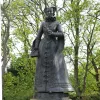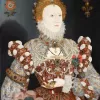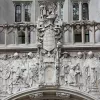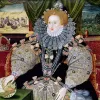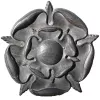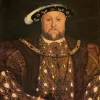Important update from TheSchoolRun
For the past 13 years, TheSchoolRun has been run by a small team of mums working from home, dedicated to providing quality educational resources to primary school parents. Unfortunately, rising supplier costs and falling revenue have made it impossible for us to continue operating, and we’ve had to make the difficult decision to close. The good news: We’ve arranged for another educational provider to take over many of our resources. These will be hosted on a new portal, where the content will be updated and expanded to support your child’s learning.
What this means for subscribers:
- Your subscription is still active, and for now, you can keep using the website as normal — just log in with your usual details to access all our articles and resources*.
- In a few months, all resources will move to the new portal. You’ll continue to have access there until your subscription ends. We’ll send you full details nearer the time.
- As a thank you for your support, we’ll also be sending you 16 primary school eBooks (worth £108.84) to download and keep.
A few changes to be aware of:
- The Learning Journey weekly email has ended, but your child’s plan will still be updated on your dashboard each Monday. Just log in to see the recommended worksheets.
- The 11+ weekly emails have now ended. We sent you all the remaining emails in the series at the end of March — please check your inbox (and spam folder) if you haven’t seen them. You can also follow the full programme here: 11+ Learning Journey.
If you have any questions, please contact us at [email protected]. Thank you for being part of our journey it’s been a privilege to support your family’s learning.
*If you need to reset your password, it will still work as usual. Please check your spam folder if the reset email doesn’t appear in your inbox.
Mary Queen of Scots
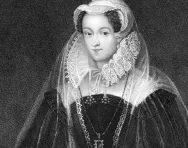
Mary Queen of Scots was born in 1542 and in fact became Queen of Scotland when she was only six days old. She was the daughter of King James V of Scotland and Mary of Guise, who was from France.
When you begin to learn more about the story of her life – which involved murder, death, prison, battles and betrayal – it’s hard to believe it’s all true!
Mary was Queen of Scotland by birth and Queen of France by marriage, although she is probably more famous for being involved in plots to throw Queen Elizabeth I off the English throne. This was ultimately her downfall; in 1587 at the age of 44, Mary was executed.
Top 10 facts
- Mary was born at Linlithgow Palace in Scotland on 8 December 1542.
- Mary’s father was King James V of Scotland and her mother was Mary of Guise, who was French.
- Mary was only a baby when she became Queen of Scotland. Sadly her father, James V of Scotland, died when Mary was only six days old.
- In 1543 Mary was crowned Queen of Scotland at Stirling Castle.
- Mary was known as Mary Queen of Scots because she became Queen of Scotland.
- In June 1566, Mary gave birth to a baby boy James who later was to become King of England when Elizabeth I died.
- Mary was Queen of Scotland until 1567, when she was forced to give up the crown for her son and fled the country for England.
- Mary was considered a threat to Elizabeth I’s throne so was held prisoner in England. She was held captive for an astonishing 19 years of her life.
- On 8 February 1587, Mary Queen of Scots was sentenced to death. She was only 44 years old.
- Mary was beheaded in England because she was found guilty of plotting to overthrow Queen Elizabeth I. Many Roman Catholics thought the throne of England was rightfully Mary's.
Timeline
- 8 December 1542Mary was born at Linlithgow, West Lothian.
- 14 December 1542James V dies and Mary becomes Queen of Scotland.
- 1548Mary is sent to live in France.
- 1558Mary marries the French prince, Francis, after growing up together.
- 1560Mary’s mother, Mary of Guise, dies.
- 1560Scotland becomes a Protestant country.
- 1561Mary returns to Scotland.
- 1565Mary marries her cousin Lord Darnley.
- 1566Mary’s only child, a son named James, is born.
- 1567Darnley is murdered.
- May 1567Mary marries the Earl of Bothwell, the prime suspect in Darnley’s murder, which causes a rebellion.
- July 1567Mary is forced to give up the throne for her son James.
- 1568Mary flees to England but is imprisoned by Elizabeth I.

- 1586Mary is thought to be involved in the Babington Plot to murder Elizabeth I and is put on trial.
- 8th February 1587Mary is executed at Fotheringhay Castle. She was 44 years old and had been a captive in England for 19 years.


Boost Your Child's Learning Today!
- Start your child on a tailored learning programme
- Maths & English resources delivered each week to your dashboard
- Keep your child's learning on track
Did you know?
- Mary was brought up a strict Roman Catholic, but by the time she eventually returned to Scotland as Queen, many of her people had become Protestants.
- Mary and Elizabeth I were cousins, but the two women never met face-to-face.
- Poor old Mary didn’t have much luck in her life, especially when it came to her choice of husbands! Her first husband died shortly after they were married, her second husband was murdered and her third ran off and left her!
- In 1548, at just five years old, Mary left Scotland for France after it was decided she was to be betrothed to François (or Francis), the heir to the French throne.
- Mary married her first husband at the tender age of fifteen; he was a year younger! Her father-in-law, Henry II, King of France, said of her: "the little Queen of Scots is the most perfect child I have ever seen".
- Mary was considered very beautiful. She was very tall, almost 6ft, had hazel eyes and golden-red hair.
- Life in France was good for Mary. Brought up with Francis, his siblings and other royal children, Mary was able to enjoy the outdoor life and developed her love of animals, especially dogs.
- Mary was said to be well educated. She learnt Latin, Greek, Italian and Spanish and was able to read, write and speak fluent French.
- Music was a big passion of Mary’s, as was dancing. She played the lute very well.
- A famous phrase associated with Mary is: "In my end is my beginning".
Look through the gallery below and see if you can spot the following:
- The Mary Queen of Scots statue at Linlithgow Palace
- Stirling Castle
- Edinburgh Castle
- Queen Elizabeth I
- Mary Queen of Scots' final resting place – Westminster Abbey
Gallery
About
Mary Queen of Scots was Queen of Scotland by birth, was briefly Queen of France by marriage and in the eyes of many Roman Catholics should have been Queen of England too!
Mary didn’t have chance to get used to the idea of being Queen as she grew up. Sadly when she was only six days old, her father, King James V of Scotland, died, which meant Mary was officially Queen.
Her choice of husband was also decided for her. Henry VIII was desperate to strengthen ties with Scotland and so hoped to marry his son Edward and Mary. However, at just five years old, Mary was engaged to Francis, heir to the French throne, and was sent to France to be brought up with her mother’s family.
Mary loved France. She studied hard, learnt a number of languages, fell in love with the outdoor life and became an accomplished rider.
In 1558, Mary married the prince and a year later he became King of France. But just two years later Francis died, leaving Mary a widow at just 17. She had no choice but to return to Scotland. There she married again, this time to her cousin Lord Darnley, who after Mary was the next heir to the English throne. But things didn’t go smoothly...
Mary soon became close to her secretary David Rizzio who was found murdered in 1566 – possibly on the orders of her husband! And although the couple went on to have a son that same year, in 1567 Darnley was murdered himself! The Earl of Bothwell was a prime suspect but when Mary married him very soon after, there was talk that Mary too might have been involved in planning her husband's murder!
Mary was brought up a strict Roman Catholic. But during her time away from her home country, lots of Scottish people had become Protestants and this meant she was not a popular Queen with many of her subjects.
Eventually the Protestant nobles rebelled, seized the castle of Edinburgh, captured Mary and on 24 July 1567 Mary was forced to give up the throne for her young son, who became James VI of Scotland. The following year Mary fled to England.
Mary’s time spent in England was miserable. She was held a virtual prisoner and moved from castle to castle as she was considered a threat to Elizabeth I’s throne. In fact she was held captive for an astonishing 19 years of her life.
Queen Elizabeth I wanted rid of Mary but she didn't feel she could have her executed without some proof she was plotting against the English crown. Finally, in 1585, Mary was suspected of being involved with Anthony Babington who was plotting to kill Elizabeth so Mary could become Queen of England. Mary was tried in court, found guilty and sentenced to death.
Perhaps because the two women were family, Elizabeth took her time to sign Mary’s death warrant. But eventually she did and Mary was executed at Fotheringhay Castle in Northamptonshire on 8 February 1587. She was 44 years old.
As Elizabeth I had no children of her own, Mary's son James went on to succeed Elizabeth in 1603. In 1612 he had his mother's body removed from Peterborough Cathedral and moved to Westminster Abbey in London. He organised a magnificent marble tomb for her. So ironically the two Queens, Mary and Elizabeth I, rest in opposite aisles in Henry VII's chapel in the same Abbey!
Related Videos
Just for fun...
- Explore the Palace of Holyroodhouse where Mary lived in an interactive game
- Inspired by the Mary Queen of Scots statue at Linlithgow Palace, make your very own paper Mary
- Challenge yourself to a quiz on Mary!
- Colour in the flag of Scotland
- Can you work through the historical evidence to solve the mystery of the murder of Lord Darnley, the second husband of Mary, Queen of Scots, at Kirk o’ Field house in Edinburgh?
- Explore the royal burgh of Stirling in 1566
- Create your own miniature to match royal portraits from Mary's time
Children's books about Mary Queen of Scots
Find out more
- Mary Queen of Scots for children: the Kiddle Encyclopedia entry
- Investigating Mary Queen of Scots is a very detailed information booklet, packed with pictures, free to download from Historic Scotland
- Listen to Homeschool History: Mary Queen of Scots from Greg Jenner, the historian behind Horrible Histories, and read interesting facts about Mary
- There are 148 portraits of Mary in the National Portrait Gallery in London!
- Information about Mary Queen of Scots from the National Trust for Scotland
- Join historian Greg Jenner for a BBC Sounds kids' homeschool history lesson on Mary Queen of Scots
- See the events of Mary’s life with this timeline
- Find out about the difficult relationship between Elizabeth I and Mary Queen of Scots
- Take a virtual tour of Mary's chambers in the Palace of Holyroodhouse and the objects in them
- Lots of stories are told about Mary's execution, but we don't know if they are true. According to the two most famous, her executioner didn't know that she was wearing a wig and dropped her head to the ground while holding up her ‘hair’ for people to see. It is also said that the executioner discovered Mary’s dog hiding under her body under her petticoat; according to the story the faithful pet never recovered from the loss of his mistress.
- 10 things you didn't know about Mary (including the fact that she washed her face with white wine!)
- Understand more about Mary by examining the clothes she wore
- Find out about Mary's 19 years of captivity at Carlisle Castle
- Read about the casting of the very first statue of Mary Queen of Scots in 2015
See for yourself
- Follow in Mary's footsteps with a guide to the places where she lived from Historic Scotland and a Mary Queen of Scots trail
- Visit Linlithgow Palace where Mary was born
- Stirling Castle, where Mary spent the first five years of her life
- Visit Edinburgh’s famous castle where Mary’s son James was born
- Tutbury Castle was Mary’s most hated prison while she was kept captive in England
- Read the inscription on Mary's tomb in Westminster Abbey
